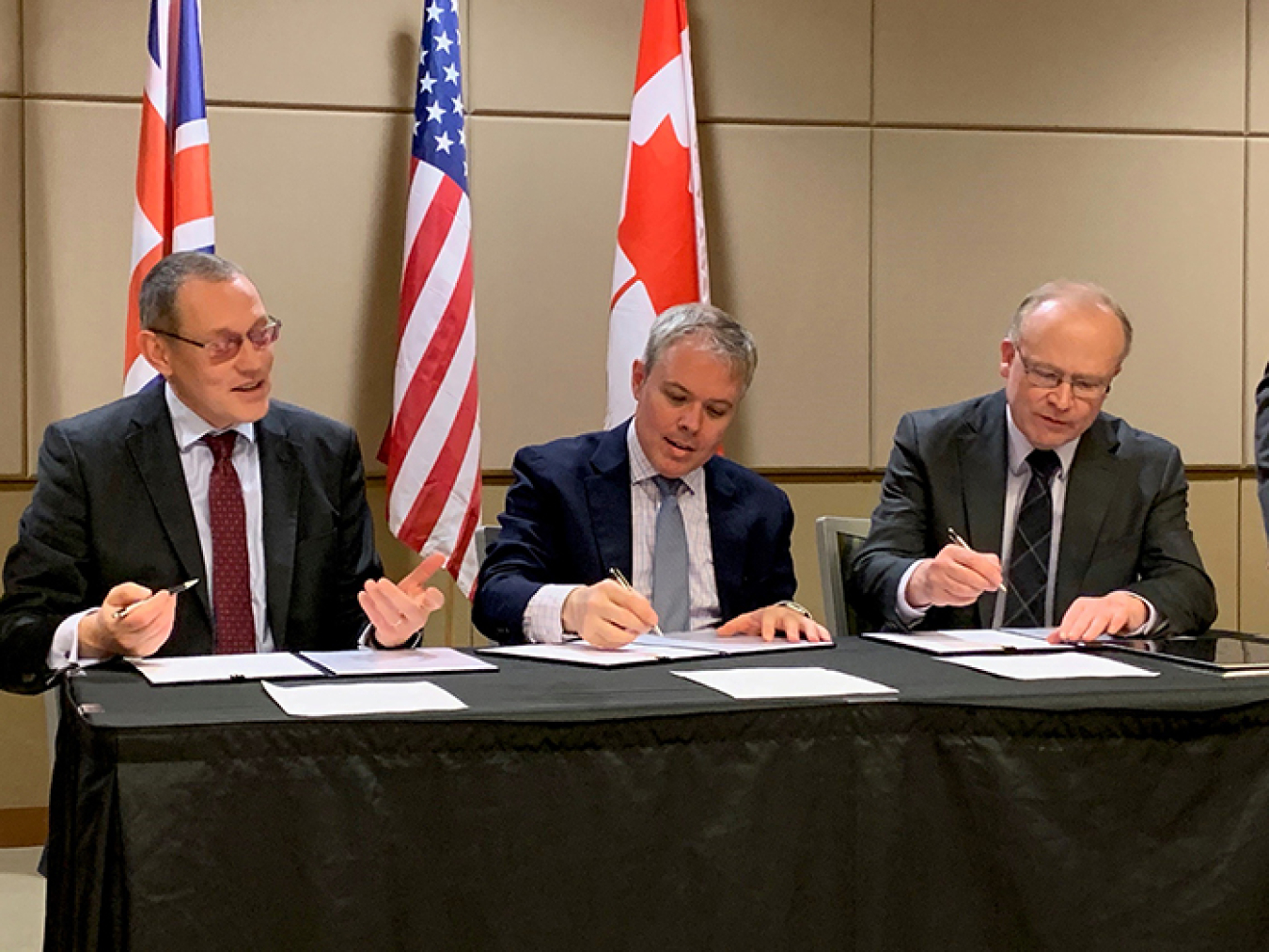A three-party agreement signed by EM and its counterparts in Canada and the United Kingdom aims to strengthen their collaborations on clean up.
Office of Environmental Management
March 10, 2020
PHOENIX – A three-party agreement signed by EM and its counterparts in Canada and the United Kingdom aims to strengthen their collaborations on cleaning up legacy nuclear sites.
EM senior advisor William “Ike” White formalized the trilateral agreement, along with Alastair MacDonald, vice president of decommissioning and waste management oversight for Atomic Energy of Canada Limited (AECL), and Adrian Simper, group director for strategy and technology for the Nuclear Decommissioning Authority of the United Kingdom (NDA).
The signing took place Sunday at a ceremony held at the Waste Management Symposia 2020 in Phoenix.
The Department of Energy, NDA and AECL have entered into bilateral arrangements with each other to share lessons learned in developing and applying technologies and approaches to legacy radioactive waste management.
The new agreement solidifies the existing relationships and enables three-way cooperation in areas of mutual interest including aging infrastructure management, in situ decommissioning/ disposal and near surface disposal facilities -- all of which are important considerations across the three countries in working towards safe and effective cleanup of legacy sites.
“Collaborating with our counterparts and sharing best practices wherever possible will help to ensure that we all learn from one another,” said White, senior advisor to the Under Secretary of Science overseeing the Office of Environmental Management.
“The ability to conduct joint technology projects, exchange personnel and conduct inter-country program reviews will increase the capabilities of our people, and allow all of us to leverage our collective resources as we tackle some of the most difficult environmental challenges,” he said.
The agreement has a formal structure to ensure that activities are targeted on areas that promise the most benefit in terms of safe, efficient and timely environmental remediation, and that the proposed efforts have support from the highest levels.
“We are all working hard, but face challenges cleaning up our sites and effectively managing our waste, to better protect the environment and the health and safety of our communities, all the while ensuring good value,” said Richard Sexton, AECL president and chief executive officer. Sexton added the agreement “clearly signals that through shared knowledge and best practices, we can build on experience gained by our counterparts and tap into the right expertise, to find unique and safe solutions to common issues, thereby leaving a better legacy for future generations.”
“We have been collaborating on a bilateral basis for some years now with our North American friends,” Simper said. “This has allowed us each to benefit from sharing each other’s experiences of our most difficult clean-up tasks. Coming together under this agreement is a natural progression and provides a unique opportunity to accelerate our individual missions and better manager our environmental responsibilities.”

